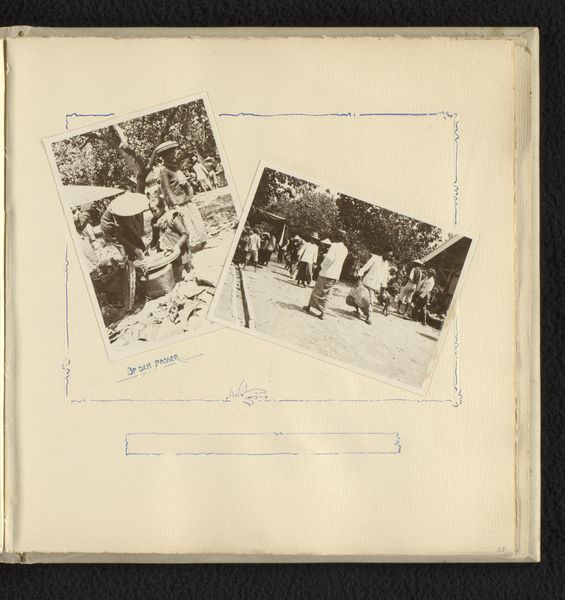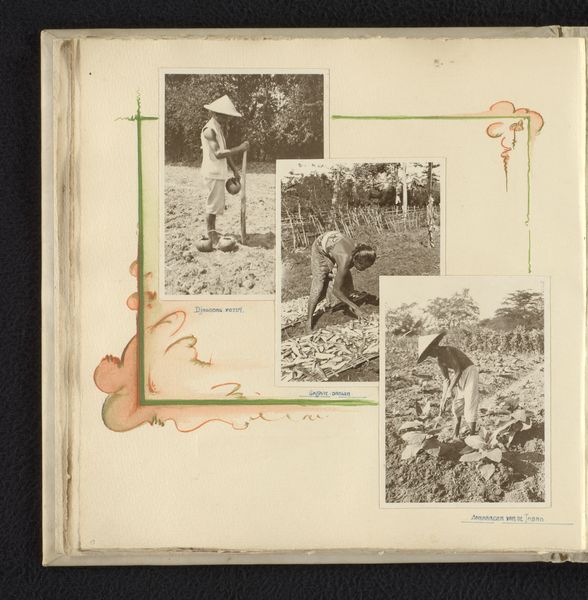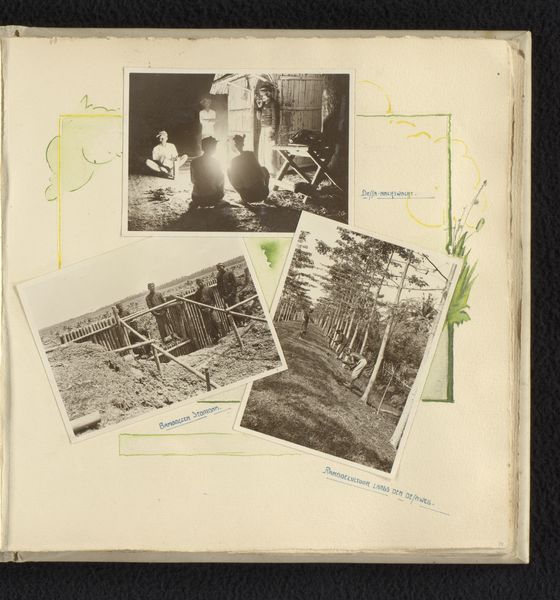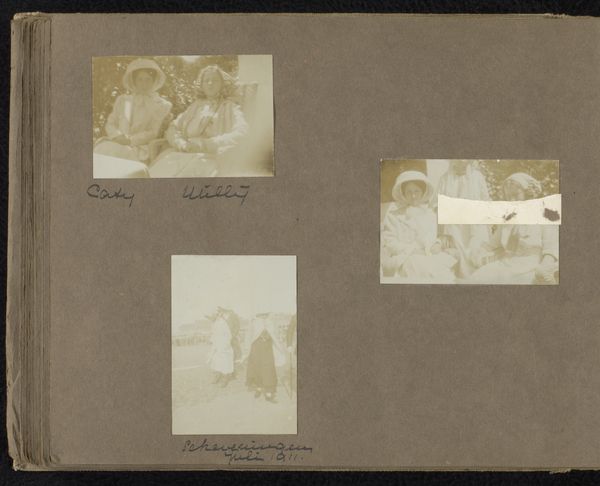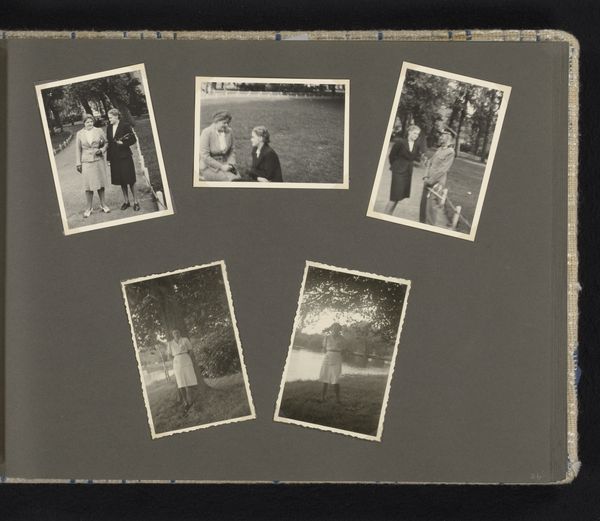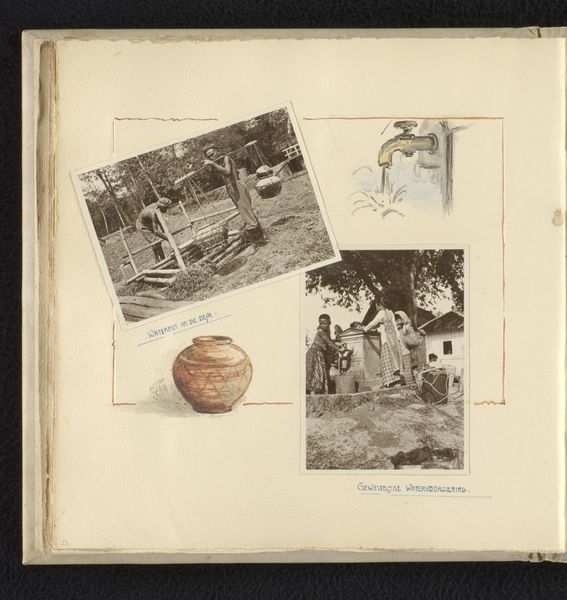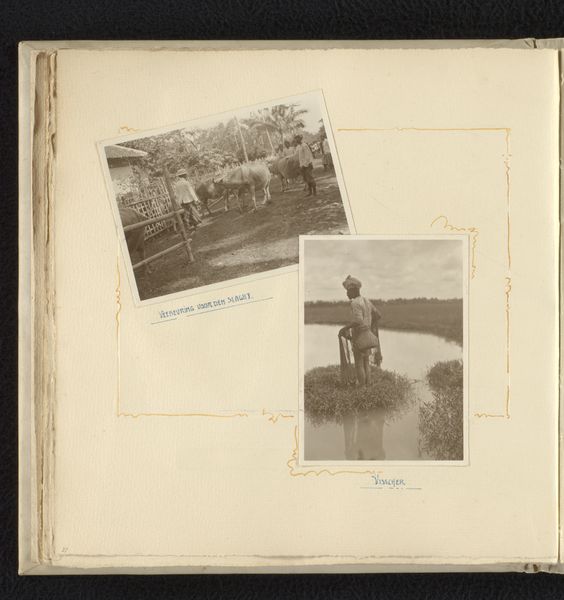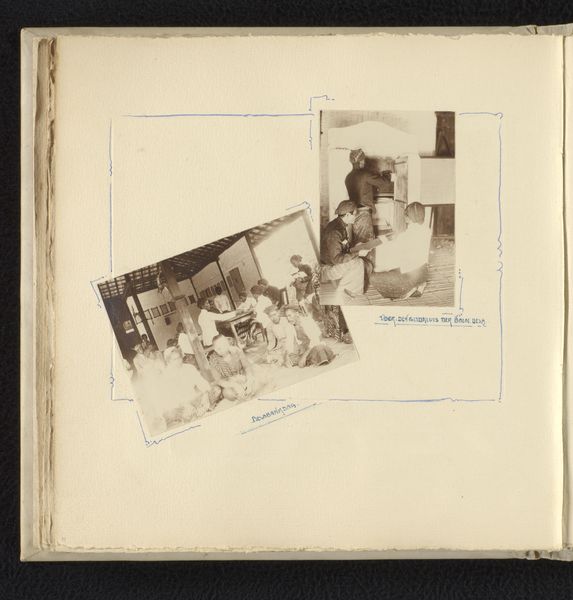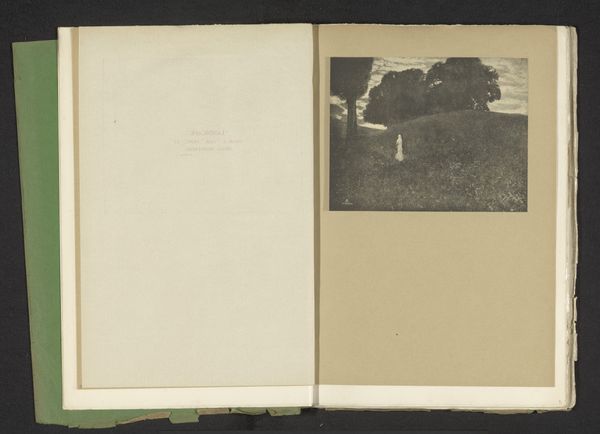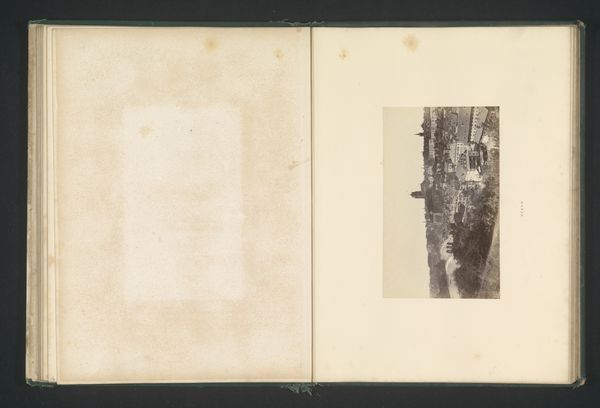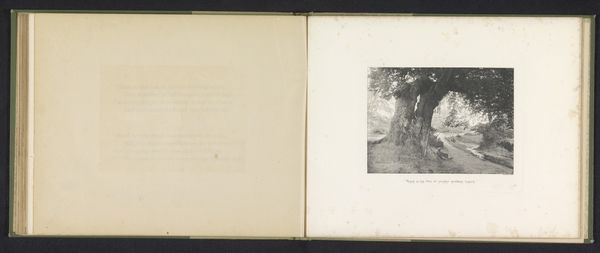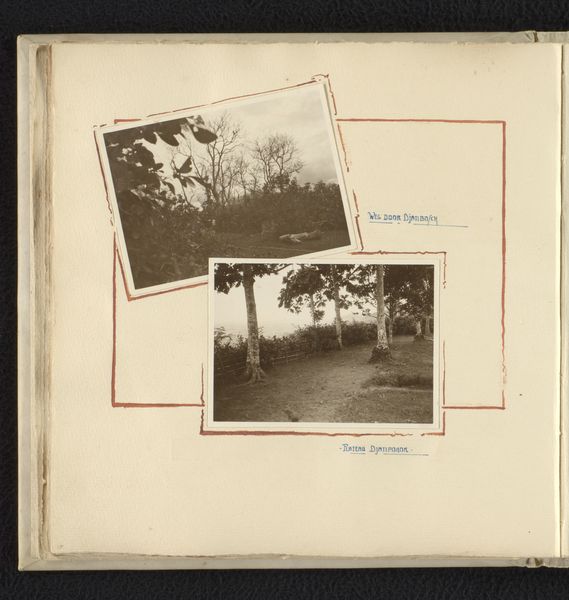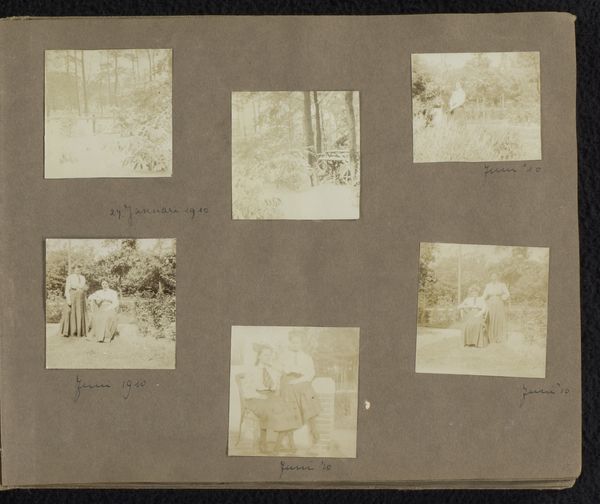
photography, gelatin-silver-print
#
landscape
#
photography
#
gelatin-silver-print
#
genre-painting
Dimensions: height 240 mm, width 240 mm
Copyright: Rijks Museum: Open Domain
Curator: This gelatin-silver print, "Grotten van Sarangburung," dating from 1910 to 1928, offers a fascinating tableau. What are your initial impressions? Editor: It’s interesting! I’m struck by how the photographs are presented almost like snapshots in an album. The monochromatic tones give it a sense of historical distance. What is most intriguing about the work, from your perspective? Curator: Observe how the formal composition guides the viewer’s eye. The asymmetrical arrangement of the photographs, deliberately askew on the page, disrupts any expectation of conventional photographic display. Consider the tension created by the contrast between the raw, naturalistic subjects within the photographs—caves, people, and landscapes—and the artifice of their presentation within this album format. How do these relationships influence your understanding? Editor: I see what you mean about the tension. It's like two realities colliding—the real scene captured and the constructed layout. What significance do you attribute to that collision? Curator: It invites a critical examination of the very act of looking, and of how the act of framing affects perception and understanding. The formal arrangement underscores the constructed nature of image-making itself. Is this construction adding or detracting from your perception? Editor: I think it enriches it because it reveals a certain artistic self-awareness and emphasizes the photographer’s control. I initially viewed it as a historical record. Now, I see it’s deliberately playing with how we perceive those records. Curator: Precisely! This play of form elevates the work beyond mere documentation, positioning it as a commentary on the visual language. Editor: This has broadened my appreciation of the visual intricacies present, rather than simply focusing on historical value. Thanks for shedding some light!
Comments
No comments
Be the first to comment and join the conversation on the ultimate creative platform.
